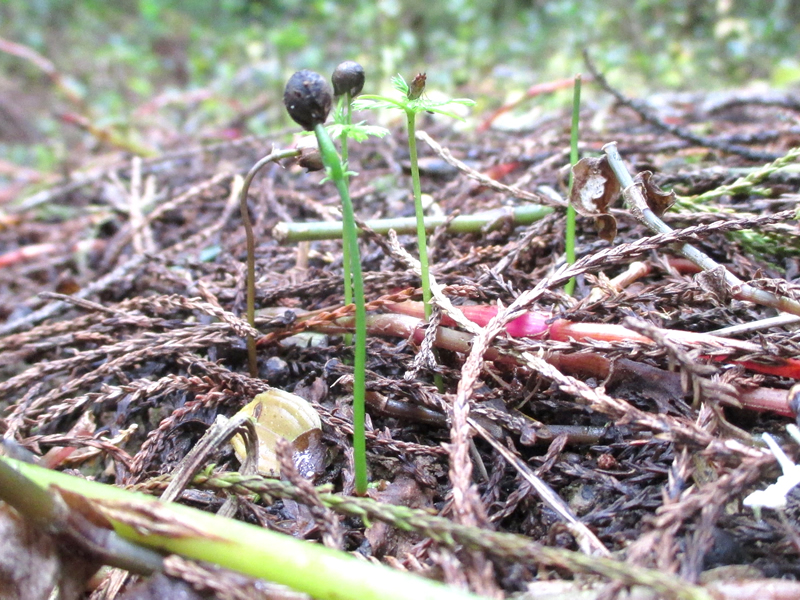Biocontrol Success in the Waingaro Valley
The tradescantia yellow leaf spot fungus (Kordyana brasiliensis) was first released in Rotorua, in the Bay of Plenty, in March 2018, with subsequent releases taking place in Northland, Waikato, Wellington, Auckland, Manawatū–Wanganui, the West Coast and Nelson.
A visit to the Waingaro Valley by Ben Wolf (Waikato District Council), Chantal Probst and Dr Ben Gooden (a visiting plant pathologist from CSIRO, Australia) 10 weeks after the release of the fungus showed very promising results. Tradescantia plants in the area, which dominated the forest floor, displayed the characteristic yellow spots on the leaves, an indication of successful establishment. Despite this early success we could not have anticipated the transformation that has occurred at this site, just a year and a half down the line. Ben Wolf revisited the site in December 2019, reporting that “the fungus has steadily spread, causing extensive defoliation of tradescantia, which has allowed the seeds of native plants to germinate. This is a biocontrol success story, as the seedlings of our native endemic coniferous tree, kahikatea (Dacrycarpus dacrydioides), are now starting to outnumber tradescantia plants at the original release site,” said Ben.

According to Chantal, the technician working on the project, climatic conditions in the Waingaro Valley are ideal for the fungus. “The tradescantia yellow leaf spot fungus will thrive in areas with cool, damp conditions all year round, with occasional flooding. We therefore recommend that similar conditions prevail at new release sites for the fungus,” said Chantal.
The yellow leaf spot fungus was introduced in New Zealand to assist the three beetle biocontrol agents in reducing the biomass of tradescantia. Although the beetles are doing well, it was believed the fungus would be a more successful agent in areas prone to flooding, where the beetles don’t establish. The fungus produces hundreds of spores, which are released in humid conditions, so a few rainy days at the right time create ideal conditions for sporulation and infection of new plants. In dry conditions the fungus is not able to release spores, and infected leaves eventually shrivel and die off.

Indeed, the limitations of dry conditions for the yellow leaf spot fungus have been observed both in New Zealand and across the ditch in Australia. Colleagues from CSIRO, Australia, have released the fungus at over 100 sites. Despite this impressive number of releases, infections have only been observed at two sites in New South Wales. “Australia’s hot, dry climate is suspected to be the cause of limited establishment,” said Chantal. Ben Wolf also reports that the ideal conditions observed in the Waingaro valley, which have facilitated the extensive damage to tradescantia and the recovery of native forest plants, have not been seen elsewhere, with the fungus dying off at some release sites because conditions are too dry. “The very dry summer we are currently having is unfortunately not helping the establishment and spread of the yellow leaf spot fungus. As a plant pathologist, I am hoping for a wet autumn and winter to help get this fungus going in other areas of the country where tradescantia is problematic!” said Chantal.
The tradescantia project was funded by the National Biocontrol Collective. Trials to assess the impact of tradescantia biocontrol agents, including the fungus are being funded by the Ministry for Business, Innovation, and Employment as part of Manaaki Whenua – Landcare Research’s Beating Weeds programme.
